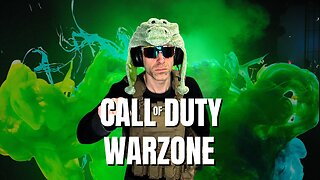Premium Only Content

7 Best Ways To Treat Rosacea
How to treat rosacea.
#rosacea #howtotreatrosacea #bestrosaceatreatments
What is Rosacea?
Rosacea is a common facial rash of unknown cause. It affects the cheeks, nose, chin and forehead of those in their 30s or older.
What are the symptoms of Rosacea?
* facial flushing
* facial redness
* spots that look like acne
* thickening of your skin
* eye problems such as dry eyes and sore eyelids.
Not all symptoms occur in all cases!
What causes Rosacea?
There are several theories including genetic, environmental, vascular and inflammatory factors. Skin damage due to chronic exposure to ultraviolet radiation plays a part.
High concentrations of antimicrobial peptides (that are important in the skin's immune response) such as cathelicidins have been observed in rosacea. Cathelicidins promote infiltration of neutrophils in the dermis and dilation of blood vessels. Fluid leaks out of these dilated blood vessels causing swelling. Enzymes such as collagenase and elastase remodel normal tissue and help in wound healing and production of blood vessels. In rosacea, they are in high concentration and may contribute to thick, hard skin. Hair follicle mites (Demodex folliculorum) are more common in people with Rosacea, we don't understand why. An increased incidence of rosacea has been reported in those who carry the stomach bacterium Helicobacter pylori, but most dermatologists do not believe it to be the cause of rosacea.
Who develops Rosacea?
Rosacea affects about 1 in 10 people, usually in their middle age, especially those with fair-skin, blue eyes and of Celtic origin.
Other Skin Disorders That Look Like Rosacea:
• Acne vulgaris
• Steroid rosacea
• Periorificial dermatitis or periocular dermatitis
• Demodicosis
• Flushing due to other causes
• Keratosis pilaris rubra faciei
• Skin ageing
• Rosacea fulminans
• Seborrhoeic dermatitis
• Irritant contact dermatitis
• Systemic (acute) lupus erythematosus
• Dermatomyositis
Common Rosacea Triggers:
The most common things reported that may trigger the skin to flush are:
• Extremes of temperature (in particular, excessive heat).
• Alcoholic drinks.
• Strenuous exercise.
• Stressful situations.
• Sunlight.
• Spicy food.
• Hot drinks.
Want to see more videos about health? Let me know in the comments below.
Subscribe for new YouTube videos ▶https://www.youtube.com/c/DrSamBailey
Follow me on Odysee (go on you know you want to!) ▶https://odysee.com/@drsambailey:c
Follow me on BrandNew Tube (yes, it has even more stuff!) ▶https://brandnewtube.com/@Drsambailey
ABOUT ME: I want to make it easier for people to fix common health problems. I work as a medical doctor in New Zealand.
Send business/sponsorship inquiries to admin@drsambailey.com
-
 1:09:26
1:09:26
Dr Sam Bailey
1 year ago $0.81 earnedDr Mark Edmond - "My Profession Is Not Scientific."
6.05K8 -
 1:50:26
1:50:26
Darkhorse Podcast
4 hours agoThere’s a New Tariff In Town: The 271st Evolutionary Lens with Bret Weinstein and Heather Heying
6.34K23 -
 29:36
29:36
The Brett Cooper Show
2 days ago $1.34 earnedThe Non-Binary Samurai Game No One Wanted | Episode 19
4.81K24 -
 16:46
16:46
Stephen Gardner
6 hours agoJudge Boasberg THREATENS to ARREST Trump White House leaders!
9.96K92 -
 1:30:53
1:30:53
Michael Franzese
21 hours agoMichael Franzese UNLEASHES on the Left: Lies, Fraud, and Betrayal
9.23K29 -
 6:15
6:15
SKAP ATTACK
1 day ago $1.76 earnedGiannis Goes Full FREAK MODE in Historic Game
12.4K2 -
 19:35
19:35
DeVory Darkins
1 day ago $32.66 earnedMedia suffers failure after Elon Musk hit piece gets DEBUNKED
76.1K146 -
 12:38
12:38
Talk Nerdy Sports - The Ultimate Sports Betting Podcast
5 hours ago4/5/25 - Talk Nerdy Sports – Madness. Money. Mayhem.
36.7K4 -
 3:18:37
3:18:37
I_Came_With_Fire_Podcast
14 hours agoTHE HUNDREDTH EPISODE!!!
52.2K7 -
 LIVE
LIVE
Gatoroz
6 hours agoTake Me Back To Verdansk
123 watching